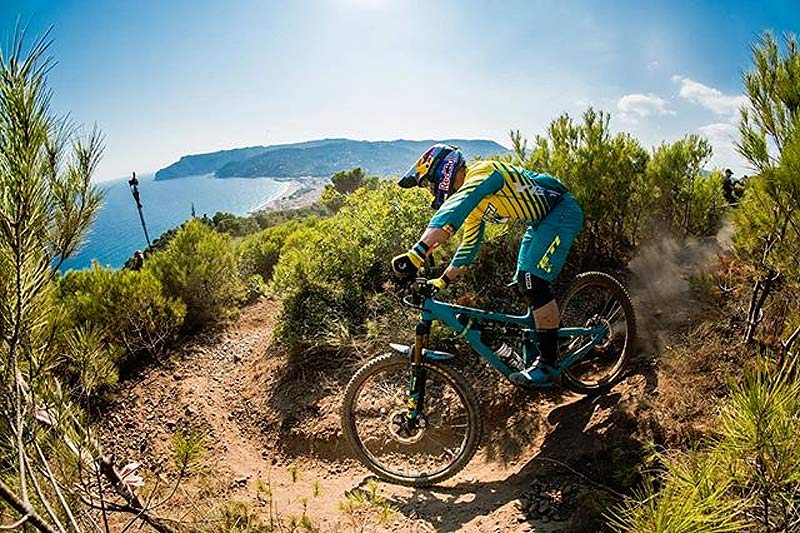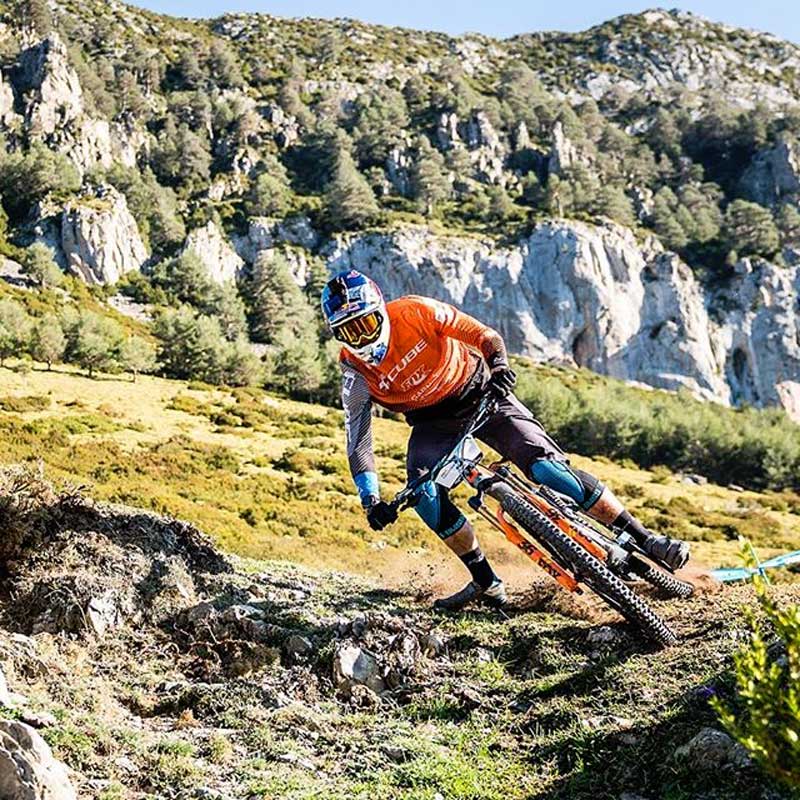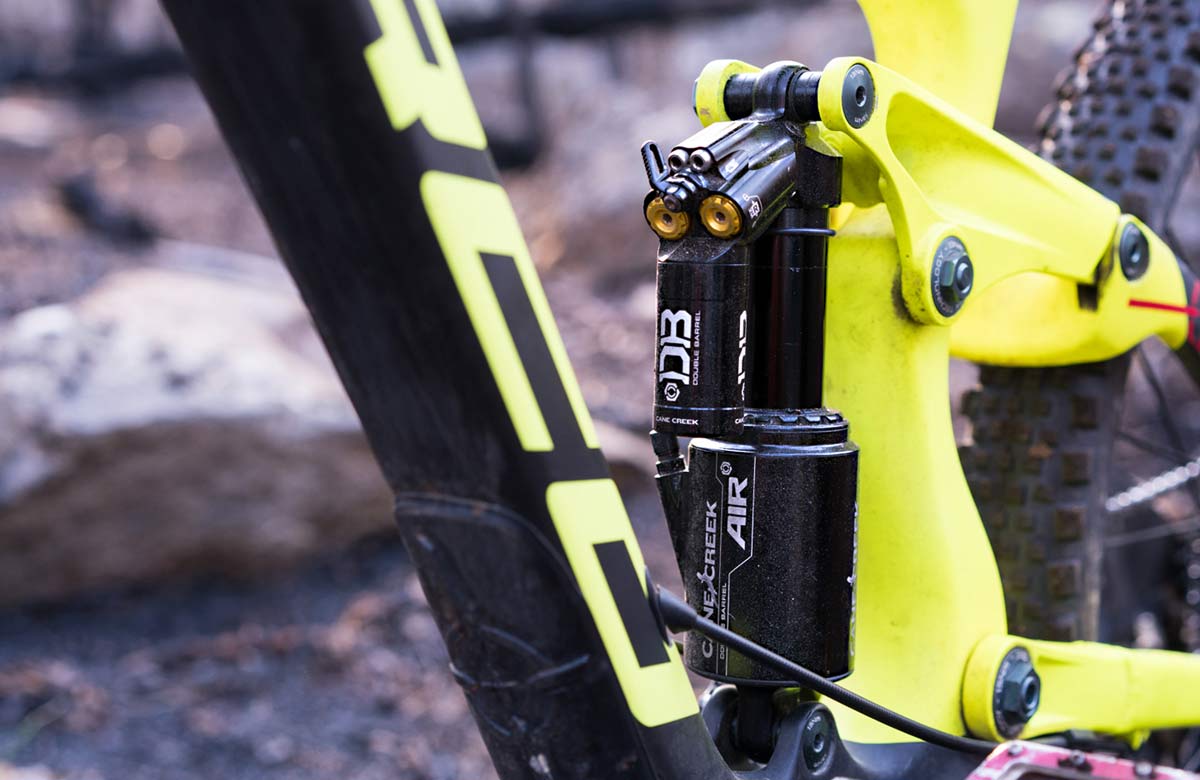We hear stories about riders burping air around the seals of their forks when they get to the top of the mountain. Or pros who are so in tune with their bikes that they can detect changes in suspension performance from the start of their downhill or enduro run at the top to the finish at the bottom. But are air forks and shocks really susceptible to performance changes from the top of the mountain to the bottom?
Here to answer the question “Do changes in altitude or outside air pressure affect mountain bike suspension performance?” are Andrew Slowey at Cane Creek and Bill Brown, FOX Bicycle Engineering Manager. Both chimed in to explain why it probably doesn’t matter as much as you think. So, apologies in advance, but you now have one less excuse for a lousy run…
BIKERUMOR: How does a change in altitude or ambient air pressure affect suspension performance?
CANE CREEK: Since your suspension is a sealed system constructed of rigid materials, change in altitude has a negligible effect on suspension performance. The differences in relative pressure is so marginal that “most riders” will find it unnoticeable in their suspension.
FOX: At sea level, all objects have 1 atm (or 14.696 psi) of pressure acting on them, as measured on an absolute scale. When you pressurize an air shock to 200 psi, what you’re really reading is gauge pressure which is a pressure differential; the pressure difference between ambient pressure and pressure inside the shock. On an absolute scale, if you were at sea level, the pressure inside the shock is 214.696 psi and the pressure outside the shock is 14.696 psi, a difference of 200 psi. As you go up in altitude this ambient pressure decreases. Going from sea level to an elevation of 10,000 feet reduces the ambient pressure to 10.196 psi, a reduction of 4.5 psi. The gauge pressure in the shock is now 204.5 psi, which is 214.696 – 10.196. It’s actually a bit more complicated than this, but (it’s hard to explain) without illustrations.
Eds’ note: Going to Wikipedia to clarify pressure measurement terminology never hurts.
CANE CREEK: It is important to note that your tire pressures can vary with altitude changes (due to the dynamic construction of tires). A change in your tire pressure will affect the handling and performance of not only the bike but how forces are translated into your suspension.

BIKERUMOR: How much of a change in pressure does it take for the average rider to notice a change in suspension performance?
CANE CREEK: The difference in ambient pressure between sea level and 10,000ft is roughly 5psi. The pressure difference is only effective on the area of the damper tube. So if a 1.26″ damper tube has an area of 1.246 in², the 5psi difference would only net 6lbs of difference between sea level and 10,000ft.
FOX: It depends on several factors – fork or shock? Air piston diameter (32mm, 34mm, 36mm, 40mm)? I think the average rider would have difficulty picking up 5psi gauge pressure change in a shock – I think 10psi become noticeable to the average rider. I think the average rider would notice a 5psi pressure change in their fork.
BIKERUMOR: Can you illustrate the answer to question #2 with numbers? As in, if you ascended/descended “X” feet, the air pressure inside your shock would feel “Y” higher/lower
CANE CREEK: If you start your ride at sea level (ambient air pressure is about 14.5 psi at 0 ft of elevation) with 200 psig (gauge) inside your shock, the absolute pressure in your shock is 214.5 psia (absolute).
Now let’s say your ride all the way up to 10,000 ft of elevation (where ambient air pressure is about 10psi), your shock still has 214.5 psia sealed inside, but now the relative pressure acting on the shock is 204.5 psig (which is what would be measured in you put the gauge back on your shock at the higher elevation.)
So this means that the difference in relative pressure between sea level and 10,000ft will be so small over the span of your ride it will be undetectable by “almost” all riders and their suspension components.

BIKERUMOR: How does that equate to real world situations? As in, would doing a big climb that’s 800 feet of vertical elevation change impact the suspension? Or 3,000 feet? More?
FOX: I think you’d have to climb about 15,000 feet to make a noticeable difference in shock performance – some of this has to do with the fact that the shock force is leveraged at the rear axle. I think climbing 5,000 feet would result in a noticeable change in fork performance; more so because of pressure build up in the lower leg than change in gauge pressure of the air spring.
CANE CREEK: Unless the temperature changes drastically, the rider would not feel any differences at those elevations related to suspension performance or setup.
BIKERUMOR: Are there other ways, tools or designs that allow the user to adjust the suspension (ie. pressure relief ports, blow off valves, creating a gap in the seals, etc.)? Are there different solutions for forks versus shocks?
FOX: Forks have a trapped air volume that shocks do not – the air volume trapped inside the lower leg. This volume is subjected to pressure changes as well. Imagine you build your fork at sea level and trap ambient pressure of 14.696 psi inside the lower leg. At sea level you have 0 psi gauge pressure inside the lower leg. Then, you go to 10,000 feet where the ambient pressure is 10.196 psi. You now have 4.5 psi of gauge pressure inside your lower leg. This gauge pressure is acting on the area of the stanchion and creates a spring force as the fork is compressed. Forks with bleeders allow the user to equalize the pressure in the lower leg with ambient pressure and bring the gauge pressure in the lower leg back to 0 psi.
Editor’s note: This point is important for folks living at altitude. Many major brands’ suspension forks are assembled at or near sea level. So, when it arrives at your door, the lowers may be somewhat pressurized. We’ve heard of (but aren’t necessarily recommending) riders slipping something between the stanchion and the seal (like the end of a small zip tie) to release internal pressure.

BIKERUMOR: Does cycling the suspension through its travel adapt it to any changes in ambient air pressure? Or do you need to do something else to adjust?
FOX: Cycling (the suspension) will not change the gauge pressure because the air spring is a closed system.
CANE CREEK: Since your suspension is a sealed system, cycling it through its travel does not adapt it to any external pressure changes. But rather (in most designs) equalizes the internal pressure between the positive and negative chambers.
BIKERUMOR: Anything else related to changes in ambient air pressure that can affect suspension performance that riders should know about?
CANE CREEK: No, ambient pressures are minuscule enough that other factors will play a bigger role in your ride, i.e. trail conditions, body fatigue, heat, and tire setup.
The fun never ends. Stay tuned for a new post each week that explores one small suspension tech, tuning or product topic. Check out past posts here. Got a question you want answered? Email us. Want your brand or product featured? We can do that too.
